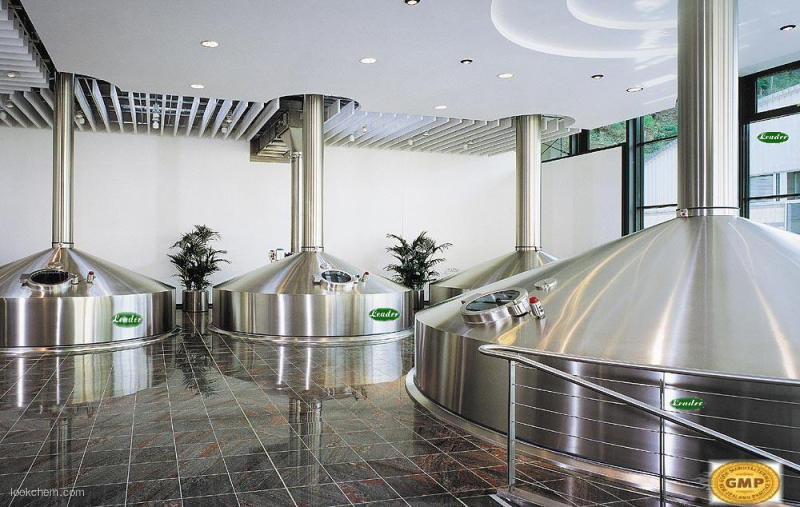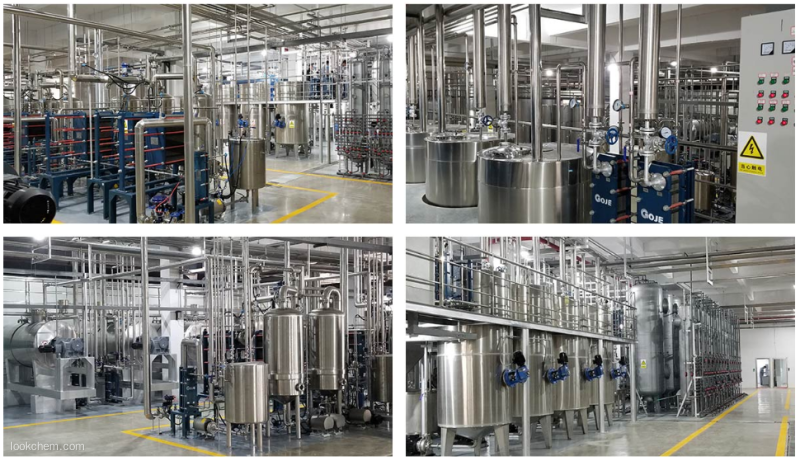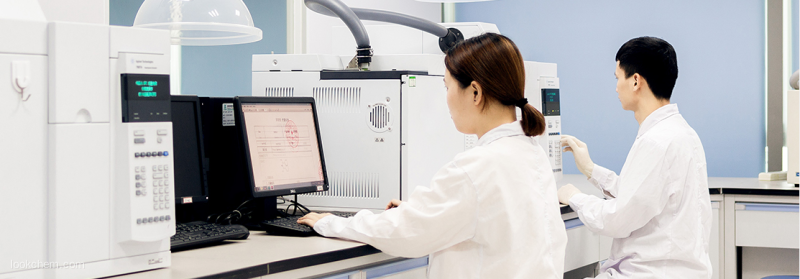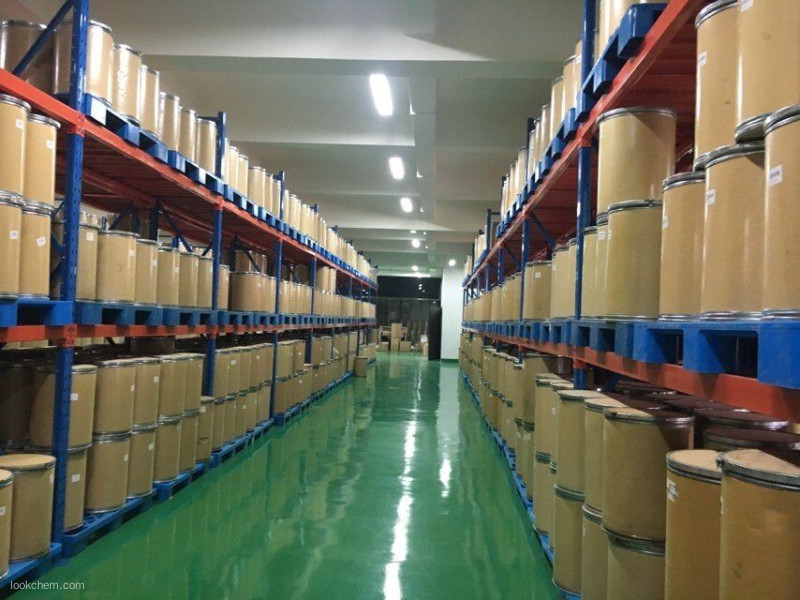PRODUCT DETAILS
|
Sodium propionate



|
| Chemical Name: |
Sodium Propionate |
| Molecular Formula: |
CH3CH2COONa |
| Molecular Weight: |
96.06 |
| Properties: |
White crystalline granule or crystalline powder, odourless or with little propionate smell, easily deliquesce, very easily soluble in water, soluble in ethabol, slightly soluble in acetone. |
| Quality standard: |
HG2922-1999, FCC-V |
| Application: |
Food preservative, moldy inhibitors. |
| Packing: |
The net weight of each box is 10kg, the amount of each box is 20 bags and the weight of each bag is 500g. Or the amount of each box is 10 bags and the weight of each bag is 1000g. Or it is packed with polyethylene bag as liner and a compound plastic woven bag as the outer layer. The net weight of each bag is 25kg. |
| Storage and transport: |
Kept in tightly closed containers, it should be stored in a dry and ventilative warehouse, kept away from moisture and hot. Furthermore, it should be stored separately from poisonous substances. Handled with care, so as to avoid damaging to bags. |
| Index item |
HG2922-1999 |
FCC-V |
| Appearance |
|
White crystalline or crystalline powder: |
| Identity test |
|
A. lin 20 solution gives positive test s for Sodium
B. Upon ignition it yields an alkaline residue that effervesces with acids.
C. Warm a small sample with sulfuric acid, propionic acid recognized by it’s odor, it evolved. |
| Content% |
99.0-100.5 |
99.0-100.5 |
| Sodium% |
-- |
-- |
| Ferrum≤% |
0.003 |
0.003 |
| Arsenic≤% |
0.0003 |
-- |
| Heavy metal≤% |
0.001 |
-- |
| Alkali |
Accord with the test |
Accord with the test |
| Moisture≤% |
1 |
1 |
| Lead≤mg/kg |
-- |
2 |
|
|
| |
| |
| Sodium propionate Chemical Properties |
| Melting point |
285-286 °C (lit.) |
| storage temp. |
Inert atmosphere,Room Temperature |
| solubility |
H2O: 0.1 g/mL, clear |
| form |
Crystalline Powder |
| color |
White |
| PH |
8-9.5 (10g/l, H2O, 20℃) |
| Water Solubility |
995 g/L (20 ºC) |
| Sensitive |
Hygroscopic |
| Merck |
14,8669 |
| BRN |
3566934 |
| Stability: |
Stable. Incompatible with strong oxidizing agents. Hygroscopic. |
| CAS DataBase Reference |
137-40-6(CAS DataBase Reference) |
| NIST Chemistry Reference |
Sodium propanoate(137-40-6) |
| EPA Substance Registry System |
Sodium propionate (137-40-6) |
| Provider |
Language |
| Sodium propionate |
English |
| SigmaAldrich |
English |
| ACROS |
English |
| ALFA |
English |
| |
| Sodium propionate Usage And Synthesis |
| description |
Sodium propionate is the salt form of propionic acid, which is an organic acid that is produced during the chemical degradation of sugar. It is a compound that is produced naturally in the body when certain fatty acids and amino acids are metabolized. Propionic acid is metabolized by a series of enzymatic reactions that are dependent on the presence of vitamin B-12, according to a 1996 article in the "International Journal of Vitamin and Nutrition Research." Sodium propionate is also chemically manufactured for a variety of industrial uses.
Sodium propionate is a common food additive that is industrially manufactured but also occurs in nature. Since it is toxic to mold and some species of bacteria, it is an especially effective additive in baked goods or other products that are susceptible to spoilage.
sodium propionate is an effective inhibitor of the growth of certain molds and some bacteria in bakery goods. It is usually preferred in non-yeast leavened bakery products because the calcium ions’ of calcium propionate interfere with the chemical leavening agents. In those bakery products, such as cakes, tortillas, pie fillings etc., chemically leaved agents are used (e.g. baking powder). sodium propionate is easy to handle and easy to incorporate into flour.
It is a safe compound when encountered at the low levels found in food. |
| Chemical properties |
It appears as transparent particles or crystal with specific smelly odor. It is easily subject to deliquescence in wet air. It is soluble in water, slightly soluble in alcohol. |
| Uses |
Primary uses: Antifungal agent, antiseptic agent (topical), disinfectant, food additive, ophthalmic agent.
It is used primarily as a mold inhibitor in bakery products. It is approved for use as a food additive in the EU, USA and Australia and New Zealand (where it is listed by its INS number 281). Chemically synthesized sodium propionate is most commonly used as a preservative in the food industry. It prevents the growth of mold and some bacteria, thereby prolonging the shelf life of packaged baked goods. According to the Code of Federal Regulations, sodium propionate is generally recognized as safe when used as a food additive. It is also used to prevent mold growth in packaged and processed cheese products. In addition, ammonium propionate is used as an additive in animal feed to prevent overgrowth of unwanted bacteria in the stomachs of livestock.
- It can be used as preservatives; used for anti-mould for cakes, waxberry and other mildew
- It can be used as germicide and antiseptic.
- Sodium propionate wet acid preservative has its antibacterial effect be affected by the environmental PH. The minimum inhibitory concentration was 0.01% at pH 5.0 and 0.5% at pH 6.5. In acidic medium, it has a strong inhibitory effect against various types of mold, aerobic bacillus or Gram-negative bacteria. It has special effect in prevention the production of aflatoxin while having no effect on the yeast. In addition, it is also used as a food preservative.
- In the leather, it can be used as masking agent in order to improve the alkali resistance of leather and tanning uniformity.
- In the food industry, it can be used for pastry preservation with the usage amount of 2.5g/kg (based on propionic acid, the same as below); in 3% to 5% aqueous solution, the maximal amount for soaking waxberry is 50g/kg. It can also be used as feed antiseptic.
- Germicide, antiseptic. Used for determination of transaminase; The general dosage is 0.1-0.3%.
|
| health risks |
Sodium propionate and calcium propionate are good preservatives, especially in food because very low toxicity has great advantages, bread usually calcium propionate, because bread is yeast fermentation, the use of sodium propionate can So that d increases dough, affecting yeast growth, will extend the time to face.
According to the Material Safety Data Sheet for sodium proprionate, as reported on ScienceLab.com, the pure chemical can irritate the skin if handled. However, since the general public would not come in contact with sodium propionate in its pure form, it does not likely present a risk. The risks of consuming sodium propionate are slight if you compare it to the possibility of consuming products that have mold or bacterial contamination. If you are worried about consuming sodium propionate, buy fresh bread or bake your own.
References: # |
| Toxicity |
ADI has not been subject to any specific restriction (FAO/WHO, 2001).
LD50 5.1 g/kg (mouse, oral).
GRAS (FDA, § 184.1784, 2000). |
| Usage limit |
GB 2760-96 (g/kg): pastry 2.5; soaking waxberry: 30 to 50; impregnated with 3% to 5% aqueous solution; should be washed before processing, calculated on propionic acid.
FAO/WHO (1984): processed cheese 3000mg/kg.
EEC regulations: it can be used for dairy products, bakery products, cheese and so on. Still used as beer and other viscous substances inhibitor. |
| Description |
Sodium propanoate or sodium propionate is the sodium salt of propionic acid which has the chemical formula Na(C2H5COO). |
| Chemical Properties |
Colourless crystals or, white or almost white powder, slightly hygroscopic. |
| Uses |
Fungicide, mold preventative. |
| Uses |
It is used as a food preservative and is represented by the food labeling E number E281 in Europe; it is used primarily as a mold inhibitor in bakery products. It is approved for use as a food additive in the EU, USA and Australia and New Zealand ( where it is listed by its INS number 281 ) . |
| Uses |
Sodium Propionate is an antimicrobial agent that is the sodium salt of propionic acid. it occurs as colorless, transparent crystals or a gran- ular crystalline powder. it is odorless or has a faint acetic–butyric acid odor, and is deliquescent. it is prepared by neutralizing propionic acid with sodium hydroxide. it is used in baked goods; nonalcoholic beverages; cheeses; confections and frostings; gelatins, puddings, and fillings; jams and jellies; meat products; and soft candy. |
| Definition |
ChEBI: An organic sodium salt comprising equal numbers of sodium and propionate ions. |
| Reactions |
It is produced by the reaction of propionic acid and sodium carbonate or sodium hydroxide. |
| Biochem/physiol Actions |
Sodium propionate has an ability to prevent ketosis in dairy cattle. |
| Safety Profile |
Moderately toxic by skin contact and subcutaneous routes. Mildly toxic by unspecified routes. An allergen. When heated to decomposition it emits toxic fumes of Na2O. |
| Purification Methods |
Recrystallise it from H2O (solubility 10%) and dry by heating at 100o for 4hours. The solubility of the anhydrous salt in MeOH is 13% at 15o and 13.77% at 68o. It is insoluble in *C6H6 and Me2CO. [Henstock J Chem Soc 1341 1934, Beilstein 2 IV 701.] |
| |
| Sodium propionate Preparation Products And Raw materials |
|
|
|
|
|
|
|
Group profiles
Leader Biochemical Group is a large leader incorporated industry manufacturers and suppliers of advanced refined raw materials From the year of 1996 when our factory was put into production to year of 2020, our group has successively invested in more than 52 factories with shares and subordinates.We focus on manufacture Pharm & chemicals, functional active ingredients, nutritional Ingredients, health care products, cosmetics, pharmaceutical and refined feed, oil, natural plant ingredients industries to provide top quality of GMP standards products.All the invested factories' product lines cover API and intermediates, vitamins, amino acids, plant extracts, daily chemical products, cosmetics raw materials, nutrition and health care products, food additives, feed additives, essential oil products, fine chemical products and agricultural chemical raw materials And flavors and fragrances. Especially in the field of vitamins, amino acids, pharmaceutical raw materials and cosmetic raw materials, we have more than 20 years of production and sales experience. All products meet the requirements of high international export standards and have been recognized by customers all over the world. Our manufacture basement & R&D center located in National Aerospace Economic & Technical Development Zone Xi`an Shaanxi China. Now not only relying on self-cultivation and development as well as maintains good cooperative relations with many famous research institutes and universities in China. Now, we have closely cooperation with Shanghai Institute of Organic Chemistry of Chinese Academy of Science, Beijing Institute of Material Medical of Chinese Academy of Medical Science, China Pharmaceutical University, Zhejiang University. Closely cooperation with them not only integrating Science and technology resources, but also increasing the R&D speed and improving our R&D power. Offering Powerful Tech supporting Platform for group development. Keep serve the manufacture and the market as the R&D central task, focus on the technical research. Now there are 3 technology R & D platforms including biological extract, microorganism fermentation and chemical synthesis, and can independently research and develop kinds of difficult APIs and pharmaceutical intermediates. With the strong support of China State Institute of Pharmaceutical Industry (hereinafter short for CSIPI), earlier known as Shanghai Institute of Pharmaceutical Industry (SIPI), we have unique advantages in the R & D and industrialization of high-grade, precision and advanced products. Now our Group technical force is abundant, existing staff more that 1000 people, senior professional and technical staff accounted for more than 50% of the total number of employees, including 15 PhD research and development personnel, 5 master′ S degree in technical and management personnel 9 people. We have advanced equipment like fermentation equipment and technology also extraction, isolation, purification, synthesis with rich production experience and strict quality control system, According to the GMP required, quickly transforming the R&D results to industrial production in time, it is our advantages and our products are exported to North and South America, Europe, Middle East, Africa, and other five continents and scale the forefront in the nation, won good international reputation. We believe only good quality can bring good cooperation, quality is our key spirit during our production, we are warmly welcome clients and partner from all over the world contact us for everlasting cooperation, Leader will be your strong, sincere and reliable partner in China.
Our Factories production lines



Our Factories R&D ability


Our Factories warehouse




 Premiumsupplier
Premiumsupplier 



